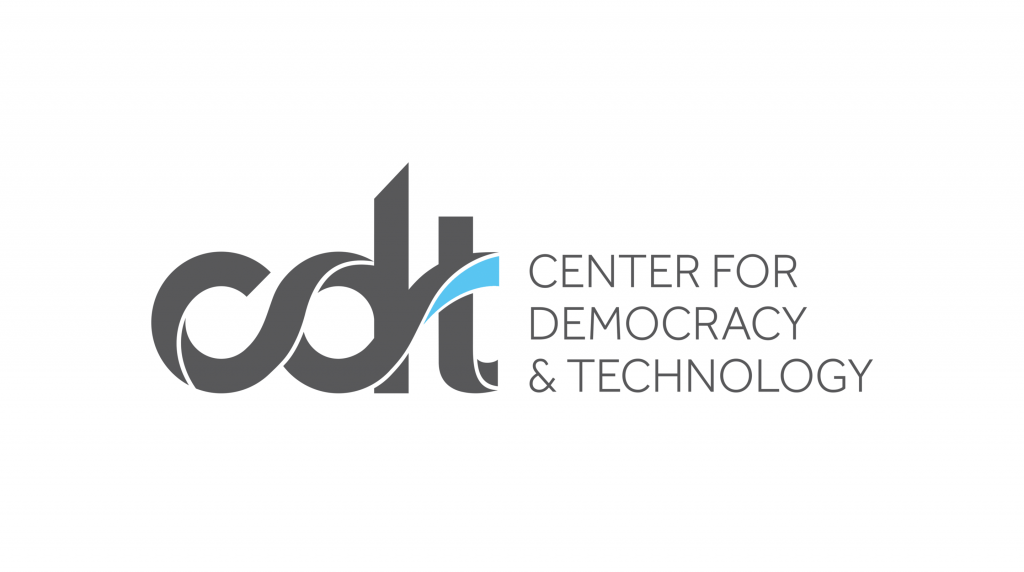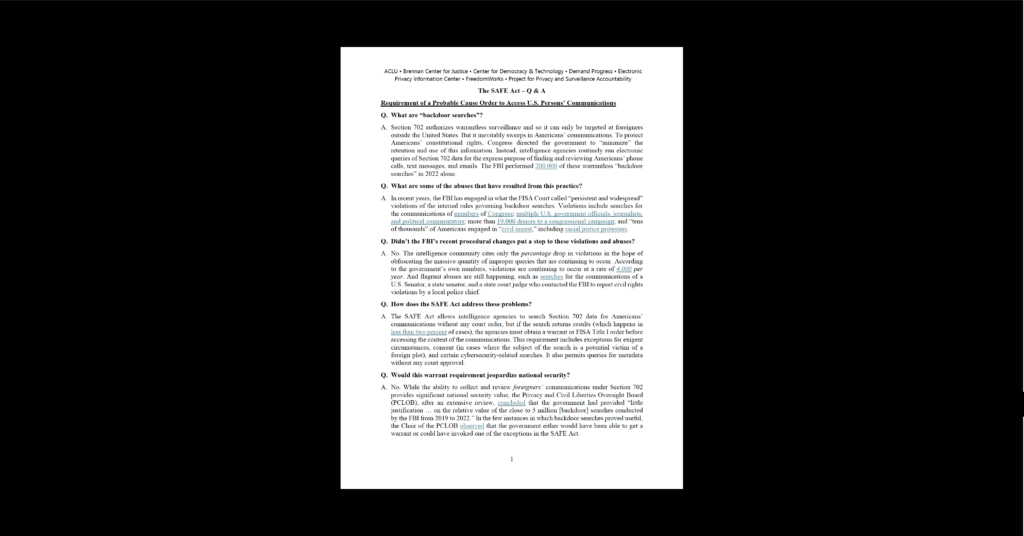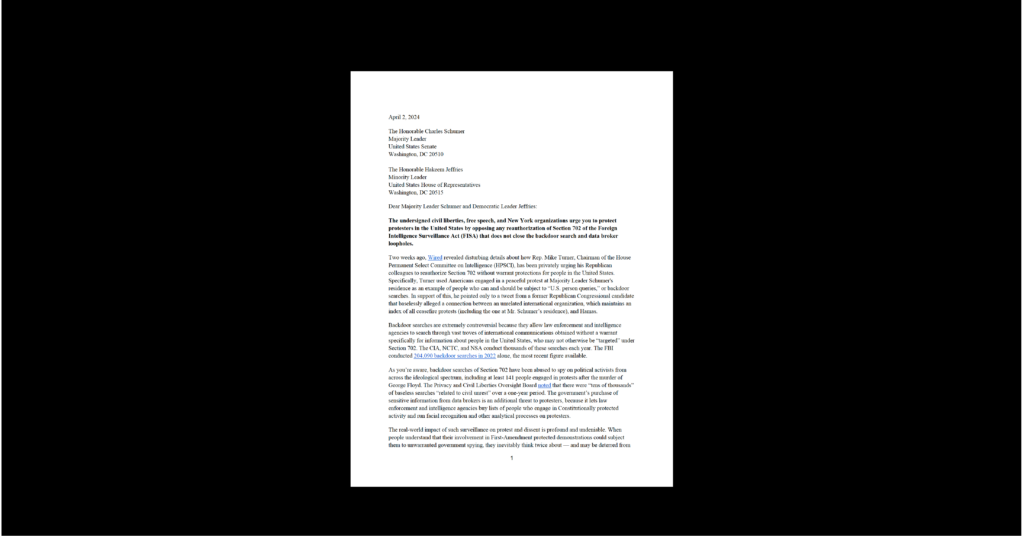CALEA Background
[Updated through 2007]
The federal wiretap law was enacted in 1968, and has undergone major revisions since then as Congress has tried to keep pace with changing technology and balance the often competing interests of law enforcement, privacy rights, and technological innovation.
In 1994, Congress adopted the Communications Assistance for Law Enforcement Act (“CALEA“). CALEA was intended to preserve but not expand law enforcement wiretapping capabilities by requiring telephone companies to design their networks to ensure a certain basic level of government access. Contrary to Congress’ intent, the FBI has used CALEA to expand its capabilities, turning wireless phones into tracking devices, requiring phone companies to collect specific signaling information for the convenience of the government, and allowing interception of packet communications without privacy protections. In 2005 the Federal Communications Commission granted an FBI petition and expanded CALEA to broadband Internet access and VOIP services.

Table of Contents
- CALEA Background
- CALEA Implementation – FCC Proceedings Round One (1997-1999)
- CALEA Implementation – Court Appeal Round One (1999-2002)
- FCC Proceedings Round Two – Extending CALEA to Internet and VoIP (2003-2006)
- Court Appeal Round Two – Extending CALEA to Internet and VoIP (2005-present)
- FCC Proceedings Round Three – Extending CALEA to Internet and VoIP (2005-present)
- Other CALEA Materials

CALEA Background
- The text of the bill is available from the FBI’s askcalea.net website.
- CALEA Legislative History, October 1994.
- Telecommunications Industry Association, resources on packet technologies and CALEA
 CALEA Implementation – FCC Proceedings Round One (1997-1999)
CALEA Implementation – FCC Proceedings Round One (1997-1999)
CALEA includes several checks and balances intended to ensure, first, that the law is not used to expand law enforcement surveillance capabilities, and, second, that the public has opportunities to participate in the process of deciding how the law is applied.
One of these provisions gives the Federal Communications Commission authority to oversee the implementation of the law. On April 20, 1998, in response to dueling petitions by the FBI and CDT, the FCC opened a broad inquiry into the privacy issues raised by the FBI’s efforts to use CALEA to expand its surveillance capabilities.
In August 1999, the FCC rejected CDT’s privacy concerns and approved many of the FBI’s demands, including a proposal to turn cellular and other wireless phones into tracking devices. At the same time, the FCC refused to protect the privacy of communications over packet-switched networks.
The links below lead to documents in the FCC proceedings for those interested in more details.
- CDT asks FCC to protect communications privacy, scale back CALEA plans [March 26, 1998
- FCC Petition for Rulemaking from the Telecommunications Industry Association (pdf) [April 2, 1998]
- CDT’s Comments on Privacy Issues [May 20, 1998]
- CDT’s Reply Comments on Privacy Issues [June 12, 1998]
- FCC Notice Tentatively Approving Surveillance Enhancements (pdf)
- CDT’s Comments on Packet Switching and Other Privacy Issues [December 14, 1998]
- CDT’s Reply Comments on Packet Switching and Other Privacy Issues [January 27, 1998]
- FCC Second Report and Order on CALEA (pdf) [August 26, 1999]
- FCC Third Report and Order on CALEA (pdf) [August, 1999] This order granted many of the FBI’s demands. CDT and other groups challenged it in federal, see below.
The Federal Communications Commission on September 11, 1998 delayed CALEA until June 30, 2000. The extension was a recognition that compliance with CALEA was not possible on the original deadline of Oct. 25, 1998 given the confusion and delay generated by the FBI’s demands.
- Petition for extension of compliance date, filed by AT&T Wireless, Lucent and Ericsson [March, 1998]
- CDT’s Comments on CALEA Deadline [May 8, 1998]
- Commission statement describing its order [September 11, 1998]
- FCC Extension Order [September 11, 1998]
The FCC also conducted an inquiry into the security of telephone company wiretap operations. The FCC proceeding, called a Notice of Proposed Rulemaking or NPRM, addressed a section of CALEA intended to ensure that CALEA compliance measures do not make the telephone system more vulnerable. CDT has argued that the FCC overlooked the security risks of surveillance systems that will be based on networked computerized switches.
- FCC notice of proposed rulemaking [Link to FCC site]
- Civil Liberties Groups Call on FCC to Protect Privacy, Security as FBI Pushes CALEA [December, 1997]
- FBI Reply Comments to FCC [February, 1998]
- Civil liberties groups criticize FBI wiretap plans, call on FCC to focus on security and privacy [February, 1998]
 CALEA Implementation – Court Appeal Round One (1999-2002)
CALEA Implementation – Court Appeal Round One (1999-2002)
From the outset, putting CALEA into effect was mired in controversy. Under the Act, disputes can be taken to the FCC, which is supposed to balance the competing interests of privacy, law enforcement and industry. The FCC, however, brushed aside privacy and cost concerns and, in an August 1999 decision, sided largely with the FBI. The FCC ruled that wireless companies must provide location information on callers, that companies were allowed to deliver packet communications to the government even when the government was not authorized to intercept them, and that carriers had to build six additional surveillance capabilities sought by the FBI.
In November 1999, the telecommunications industry and privacy groups challenged the FCC decision by filing judicial appeals, which were consolidated in the US Court of Appeals in DC. CDT filed its petition jointly with the Cellular Telecommunications Industry Association. The joint petition challenged the FCC’s requirement that companies locate and track wireless phone users. CDT and CTIA also asked the court to overturn the Commission’s ruling allowing the government to intercept the content of “packet” communications without a judicial warrant.
- CDT/CTIA Petition for Review [November 22, 1999]
- CDT/CTIA/USTA Brief [January 20, 2000]
- CDT/CTIA/USTA Reply Brief [April 4, 2000]
- D.C. Circuit opinion [August 15, 2000]
- FCC response to DC Circuit Court of Appeals decision (pdf) [April 11, 2002]
 FCC Proceedings Round Two – Extending CALEA to Internet and VoIP (2003-2006)
FCC Proceedings Round Two – Extending CALEA to Internet and VoIP (2003-2006)
The nation’s telecommunications infrastructure is rapidly integrating technologies that use the Internet, the Internet protocol (“IP”) and other packet technologies to deliver voice communications (Voice Over IP, or VoIP). This development has the potential to reduce costs, support innovation, increase consumer options, and improve access to communications services. It also poses challenges for government agencies seeking to carry out wiretaps. In August 2005, the Federal Communications Commission ruled that providers of broadband Internet access and certain providers of VoIP services are required to design their networks to be wiretap friendly as a result of a 1994 law, the Communications Assistance for Law Enforcement Act (CALEA). CDT and others appealed, on the ground that CALEA applies only to the public switched telephone network and is ill-suited to the Internet.
- FBI Letter to FCC, [pdf] November 25, 2003
- FCC forum on VoIP December 1, 2003 – Commissioners’ opening remarks, staff background presentation, witness presentations, and links to comments filed after the forum.
- Comments of DOJ/FBI/DEA [pdf] December 1, 2003
- FBI Letter to FCC, [pdf] December 18, 2003
- Feds seek wiretap access via VoIP, by Declan McCullagh, CNET News.com, January 8, 2004
- DOJ letter [pdf], February 4, 2004
- FBI Petition to FCC for CALEA Rulemaking [pdf], March 10, 2004
- FCC Public Notice seeking comments on the FBI’s CALEA Petition for Rulemaking [pdf], March 12, 2004
Selected Comments on CALEA Petition for Rulemaking
Initial Comments:- AT&T
- Center for Democracy & Technology
- Cellular Telecommunications & Internet Association (CTIA)
- Conference America
- Covad Communications
- Educause
- Electronic Frontier Foundation
- Electronic Privacy Information Center (EPIC)
- ISP CALEA Coalition
- MCI
- Privacilla
- Telecommunications Industry Association
- VON Coalition
Reply Comments (April 27, 2004):
- Joint Statement of Industry and Public Interest
- Center for Democracy & Technology
- FBI/DOJ/DEA Reply Comments to FCC on CALEA Petition for Rulemaking
- Electronic Frontier Foundation
- National Cable and Telecommunications Association
- Telecommunications Industry Association
- United States Telecom Association
- Ex parte filing of VeriSign [pdf], July 16, 2004
- FCC Declaratory Ruling on CALEA coverage of push-to-talk [pdf], September 23, 2004
- FCC Notice of Proposed Rulemaking on CALEA and Broadband Access and Services [pdf], September 23, 2004
- FCC First Report and Order on CALEA, Broadband and VoIP [pdf] (adopted August 5, 2005; released September 23, 2005)
- USTA Petition for Reconsideration and Clarification [pdf], November 14, 2005
- Texas ISP Association (and others) Petition for Reconsideration [pdf], November 22, 2005
- CDT Request for a Stay Pending Judicial Review [pdf]. November 23, 2005
- DOJ Opposition to Stay Request [pdf], December 2, 2005
- Verisign Opposition to Stay Request [pdf], December 2, 2005
- Comments of Industy and Public Interest, led by CDT, in Support of Reconsideration [pdf], December 30, 2005
- Reply Comments of Industy and Public Interest, led by CDT, in Support of Reconsideration [pdf], January 20, 2006
- For the FCC’s rejection of the USTA Petition for Reconsideration, see “Second Report & Order” in the FCC Round Three below.
 Court Appeal Round Two – Extending CALEA to Internet and VoIP (2005)
Court Appeal Round Two – Extending CALEA to Internet and VoIP (2005)
After the FCC ruled in August of 2005 that producers of VoIP services and other packet technologies for transferring voice were subject to CALEA rules, CDT and a number of other civil liberties organizations filed an appeal with the District of Columbia Circuit Court of Appeals. Alongside CDT in the appeal were the American Library Association, COMPTEL, the Electronic Frontier Foundation, the Electronic Privacy Information Center, Pulver.com and Sun Microsystems. In June 2006, the Court of Appeals rejected that appeal and in July CDT led a group of petitioners in asking the full court to reconsider its decision. Below are a collection of documents related to this second CALEA appeal.
- Original Petition for Appeal [PDF], October 25, 2005
- CDT Request to Stay CALEA Order [PDF], November 23, 2005
- Opening Brief in ACE v. FCC [pdf], January 26, 2006
- Reply Comments to FCC requesting delay of VoIP rule [pdf], January 31, 2006
- FCC Brief in Opposition in ACE v. FCC [pdf], February 27, 2006
- DOJ Brief in Opposition in ACE v. FCC [pdf], February 27, 2006
- Reply Brief by CDT & Coalition in ACE v. FCC [pdf], March 14, 2006
- Decision of the U.S. Court of Appeals in ACE v. FCC [pdf], June 9, 2006
- CDT’s Petition for Rehearing En Banc in ACE v. FCC [pdf], July 28, 2006
- DOJ/FCC Response to Petition for Rehearing [pdf], August 17, 2006
 FCC Proceedings Round Three – Extending CALEA to Internet and VoIP (2005-present)
FCC Proceedings Round Three – Extending CALEA to Internet and VoIP (2005-present)
At the same time (and in the same document) that the FCC issued its “First Report and Order” challenged in the above appeal, it also issued a “Further Notice of Proposed Rulemaking” proposing a range of further changes and decisions about the application of CALEA to the Internet. This further rulemaking proceeding continued during the court appeal.
- FCC First Report and Order, and Further Notice of Proposed Rulemaking [pdf] (adopted August 5, 2005; released September 23, 2005)
- Comments filed November 14, 2005 in response to FCC Further Notice of Proposed Rulemaking
- Documents relating to FCC Second Report and Order and Memorandum Opinion and Order (May 3, 2006)
- FCC Second Report and Order and Memorandum Opinion and Order [pdf], (adopted May 3, 2006; released May 12, 2006)
- Joint Response to FBI Petition on CDMA2000 Standard [pdf] (July 25, 2007) – response by CDT and others to FBI petition asking FCC to mandate additional surveillance features in certain IP-based services
- CALEA round-up 2005-2007 by Susan Crawford
 Other CALEA Materials
Other CALEA Materials
The following documents are related to the discussion of CALEA, but don’t fit into the proceedings on any particular motion.
- AT&T Petition [pdf] October 18, 2002 – AT&T Petition for Declaratory Ruling that AT&T’s Phone-to-Phone IP Telephony Services are exempt from Access Charges.
- Cisco’s Lawful Intercept Architecture (an “Internet draft” submitted to the IETF), [txt] October, 2003
- Telecommunications Industry Association, Powerpoint on TIA Work on Intercept Standards, [ppt] February, 2004
- Senate Commerce Committee hearing, February 24, 2004
- Pulver Free World Dial-up Opinion and Order, [pdf] February 19, 2004
- FCC IP-Enabled Services Notice of Proposed Rulemaking [pdf], March 10, 2004
- FCC Press Release on IP-Enabled Services NPRM [pdf], February 12, 2004
- CDT Position paper on the Internet and Law Enforcement Surveillance [pdf], March 19, 2004
- Department of Justice Office of the Inspector General report, “Implementation of the Communications Assistance for Law Enforcement Act by the Federal Bureau of Investigation,” [pdf] [html], April 19, 2004
- Joint letter to Senator John Sununu regarding the VOIP Regulatory Freedom Act [pdf], June 21, 2004
- Testimony of Jim Dempsey before the Senate Commerce Committee on S. 2281, The VOIP Regulatory Freedom Act of 2004 June 16, 2004
- Comments of the Department of Justice regarding FCC IP Enabled Services Proceeding [pdf], May 28, 2004
- Comments of the Department of Homeland Security regarding FCC IP Enabled Services Proceeding [pdf], May 28, 2004
- CDT One Pager, “The Internet and Law Enforcement Surveillance: Extension of CALEA to the Internet Would Be Unlawful, Unnecessary and Unwise” [pdf], May 20, 2004
- Testimony of Jim Dempsey before the Subcommittee on Telecommunications and the Internet House Committee on Energy and Commerce on Law Enforcement Access to Communications Systems in a Digital Age, September 8, 2004
- The FBI’s Implementation Report from January 1998 (HTML) details the early implementation and cost of CALEA.
- CDT wrote an analysis of the FBI’s Implementation Report.
- Sections of the Telecommunications Act of 1996 defining “information service,” “telecommunications service,” and “telecommunications”
- The Stevens Report [pdf], April 10, 1998


